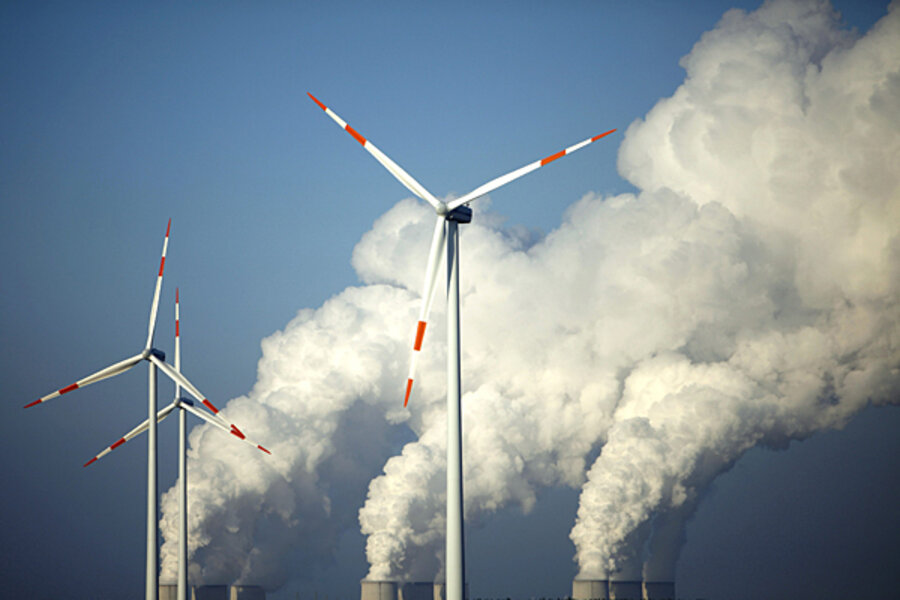The dirty coal behind Germany's clean energy
Loading...
In the very crowded field of unintended outcomes of EU energy policy, what is happening in Germany this year would be hilarious if it wasn't so tragic:
Coal-fired power plants contributed 52% of Germany's first-half electricity demand as output from natural gas-fired power plants and wind turbines fell, research organization Fraunhofer Institute (ISE) said.
Coal plants increased production by about 5% to 130.3 TWh in the first six months of 2013 as output from gas-fired power plants fell 17% to 21.9 TWh, said ISE, which collated data from Germany's statistical office and the EEX transparency platform.
It get's worse. Germany is not only building new coal plants, but they use lignite, a soft brown coal halfway between coal and peat with an even higher CO2 and ash content than hard coal. Germany is the largest lignite producer on earth - and get it from strip mining. So much for romantic vision Germans have of themselves as nature friends which they have managed to con the rest of the world into thinking too, as Robert Wilson at Carbon Counter notes:
It is one of the finest achievements in public relations in history. Germany has managed to be praised by environmentalists more than any other developed nation and yet is building more coal plants than more or less any other developed country. If China is watching on they should take note. The easy way to receive the adulation of Western Greens is to put up a stack of solar panels, and to just keeping building coal plants as before. Just think of the headlines: “China gets 50% of its electricity from solar power.” The green adulation will be remarkable, yet the carbon emissions will keep soaring.
If you like me you'll love Robert by the way, and he's an actual scientist to boot, he deserves more readers.
The essential problem in Germany is complicated, which explains why the simple narrative of saying solar is 50% of power, which isn't the case at the July midday time of writing today anyway, gets the exposure. German gas prices have the strongest link to Russian oil indexed prices. The link continues in no small part thanks to the German horror of fracking, despite it happening in Germany since the 1950s. Throw in the dysfunctional carbon market and add megatons of US coal displaced by lower US gas prices and we have baseload power, the stuff that actually keeps the streetlights on, coming from nuclear and coal. But there is so much subsidised solar generation, in a country not known for it's low latitude or sunshine, that solar, effectively free, provides much of the peak capacity during peak daylight business hours. That means that gas provides the extra power needed at shoulder periods in the 0700 to 0900 and 1700 to 1900 peaks.
But this is where it gets really complicated - and far more unfortunate. Germany has a lot wind generation as well, but wind, being wind, isn't as reliable as the 20000 MW solar generator that reliably disappears and returns every day. Sometimes, it's there, sometimes it's not and depending on the time of day, wind generators can make a lot of money by NOT generating electricity. This of course goes to the heart of the issue, that energy can't be stored, something most greens need a Duh! moment to understand. The result: expensive wind seems to be the co-victim of high gas prices, in some bizarre evil twin dynamic. The result:
Wind turbine output fell 10% to 22.4 TWh, while solar output was unchanged at 14.3 TWh. Hydro output rose 3% to 9.2 TWh, with nuclear output up 1.8% to 46 TWh.
Hydro output rose, but then again so did the calamitous floods of early this year. Whether they were the result of global warming from increased CO2 production is up to you. But next time Mark Ruffalo or Josh Fox or the UK Friends of the Earth hold up Germany as an example of the way forward, let some facts intrude. Energiewende? This is an Energie Katastrophe. Not only for Germany, but for the rest of us who all share the same sky.







